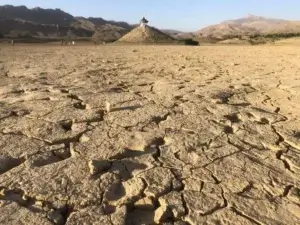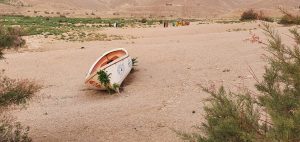Climate Change and Quetta
Asif Khan
The environmental and climate change problems in Quetta city are serious. A significant decline in environmental conditions over the past quarter of the century is highly visible. The mountain-ringed city has been declared as one of the most polluted cities in the globe. The underlying reasons behind this is the rapid growth of the population, industries, vehicles emitting pollution, Chloro Floro Carbon (CFC) being emitted by refrigerators.
Fast urbanization coupled with increasing population growth indicates that the population of the city will be doubled by 2030. The Climate of Quetta is arid, temperate with low precipitation in winter, and higher evapotranspiration in summer. The altitude in the district varies from 5577 ft. to 10500 ft. therefore, the weather is extremely dry and the winter is very cold. Unfortunately, the city lies outside the range of the monsoon range and rainfall is scanty and irregular.
Quetta endured spells of drought, earthquakes, flash-floods
Quetta valley is part of the Basin and consists of a tectonic depression, a buried valley, and karstic bedrock. A network of minor valleys dissects the Quetta valley. Quetta like other parts of Balochistan is an arid largely mountainous district with low rainfall 100-300 mm/year and extreme variations in temperature during summer and winter. It has endured frequent spells of drought, flash floods, and earthquakes. Quetta is the center of tertiary education and health care services as well as the hub of commerce trade, and employment.
Quetta and overall Balochistan need on an urgent basis the comprehensive network of stations that meet the standards of the World Meteorological organization and are geared to the needs of the province.
World Climate Change organizations and Govt of Pakistan and Balochistan need to focus on issues and challenges of Climate change in Balochistan, especially Quetta city. The vision of the government in the short term is of generating comprehensive weather and climate data in a usable form for different applications.
The weather forecast, long-term trends, and projection for agriculture, informing the situation of water, drought, flood windstorm, cold wave, heatwave, rescue, relief, and rehabilitation after a disaster. In the long term, emissions will be reduced in order to contribute to the national and international efforts of reducing global warming.
Delay, Check Dams need to be constructed around Quetta
Delay and check dams also need to be constructed around Quetta city to maintain the depleting water table on a war-footing basis. The strategy of water shade management should also be applied to attract more rains to overcome the scarcity of water problems. The Prime Minister’s plan of 1 billion trees needs to be translated into action when it comes to Quetta and other arid parts of Balochistan to mitigate the impacts of climate change.
Climate Change and Quetta







A Serious step should be taken for Climate change in Balochistan particularly Quetta.
Ih past 30 years Quetta distrubed by Claimate change
Un expected rains and heavy snow fall sawn in many areas.